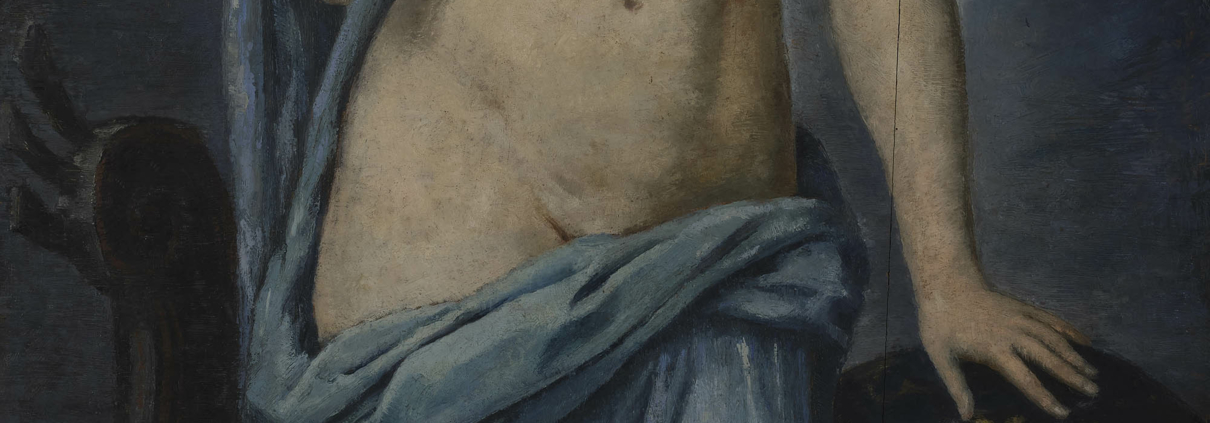Henry Cros, sculptor and designer
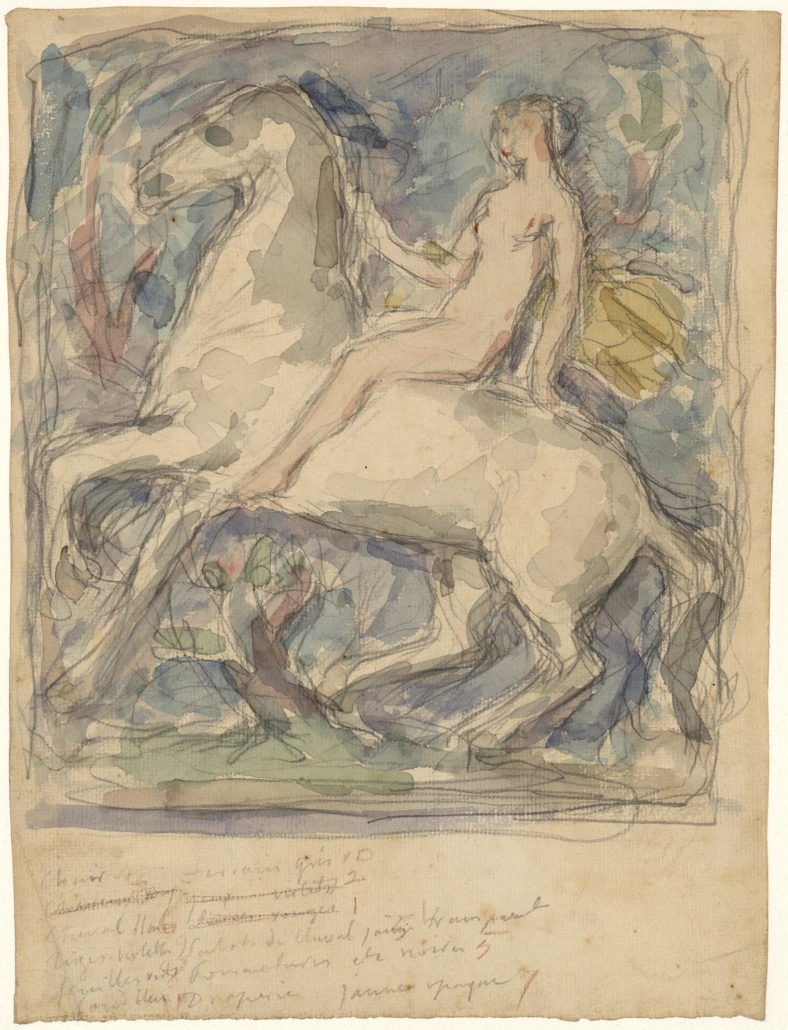
The 19th century still has some great discoveries in store for us, the little-known figure of the painter, sculptor, ceramist and glassmaker Henry Cros is one of them. Thanks to the important collection of drawings by the artist, inventor of glass paste sculpture, the Museum of Decorative Arts is offering from March 6 to May 26, 2024, a monograph by this artist admired by Auguste Rodin and Antoine Bourdelle, friend by Paul Verlaine and Édouard Manet. Was he romantic, neo-classical, or symbolist? This is one of the questions posed by the exhibition “Henry Cros, 1840-1907, sculptor and designer”, through more than a hundred works bringing together sculptures, paintings and drawings, from the museum’s collections, alongside some exceptional loans. The artist’s major themes are presented: touching portraits of children, figures from a dreamed Antiquity and fairy tales. The artist’s technical mastery is illustrated by more than fifty drawings and around thirty sculptures in glass, wax, terracotta, bronze and marble. This project allows us to discover the work of Henry Cros, of whom Bourdelle said that he brings together “all of Antiquity in a new soul”.
Henry is the brother of the famous inventor and poet Charles Cros and the doctor Antoine Cros. This famous trio participates in the literary and artistic modernity of the 1860s-1870s. The exhibition addresses the various personalities of the artistic and literary worlds around which the three brothers revolve with portraits drawn by Henry Cros: that – rare – of a young Paul Verlaine autographed, of the caricaturist André Gill, of the publisher of the Parnassien poets Alphonse Lemerre , the actor Coquelin junior and of course the legendary figure of the free and scandalous salonnière Nina de Vilars de Callias, the lover of his brother Charles. Antoine’s collection of poems, illustrated with a print by Henry in 1882, evokes the other brother, a doctor by profession, who also runs a political-literary salon.
The dual practice of painter and sculptor and the contemporary rediscovery of ancient polychrome plastic guide Cros on the path of color sculpture. His monochrome projects remained numerous until 1880, the exhibition presents some in terracotta, marble and bronze including the moving Portrait of a little boy dated 1875. Among the works presented, we discover the vase cast by Hébrard d ‘after the model of the glass vase from the Museum of Decorative Arts. Numerous drawings and sketches for portraits or original photographs are highlighted, such as the preparatory drawing for the bust of Nina de Vilars.
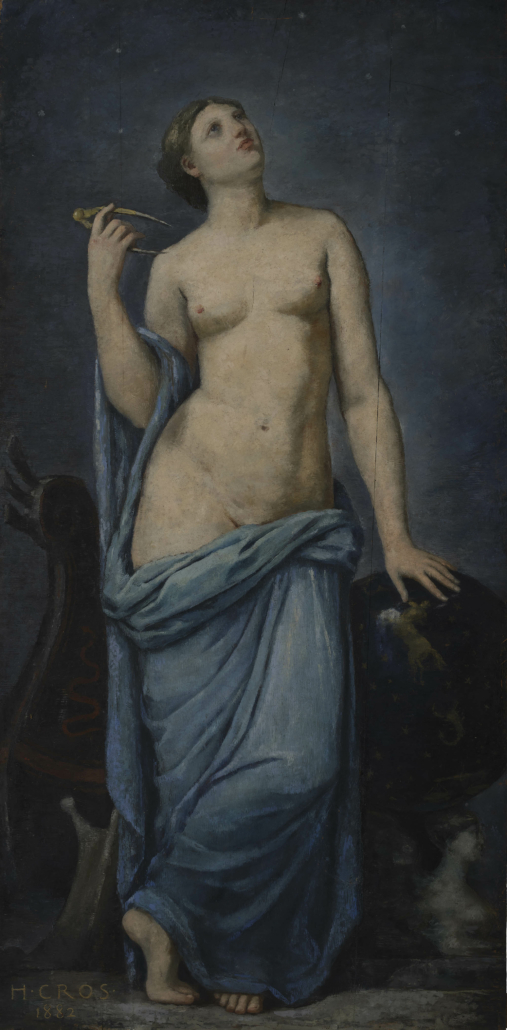
The exhibition unveils a large encaustic painting, Urania (1882), muse of astronomy, an important state commission demonstrating the culmination of Cros’s research. The ancient encaustic paint then used for coloring marbles is one of the sources of his research. His modern portraits, inspired by those modeled during the Renaissance, which marked his contemporaries, remain of rare originality and psychological presence. The portrait of his young wife or that of the astonishing Shah of Persia, Nasse el Din, are examples of this. His compositions close to the poetic universe of the first Renaissance correspond to the great successes of the artist’s beginnings. The exhibition highlights five of them, including La Promenade du Salon of 1874, where we observe the contrast between the precise delicacy of the figures and the freedom of the backgrounds with impressionist touches, whose photographic focus is outstanding.
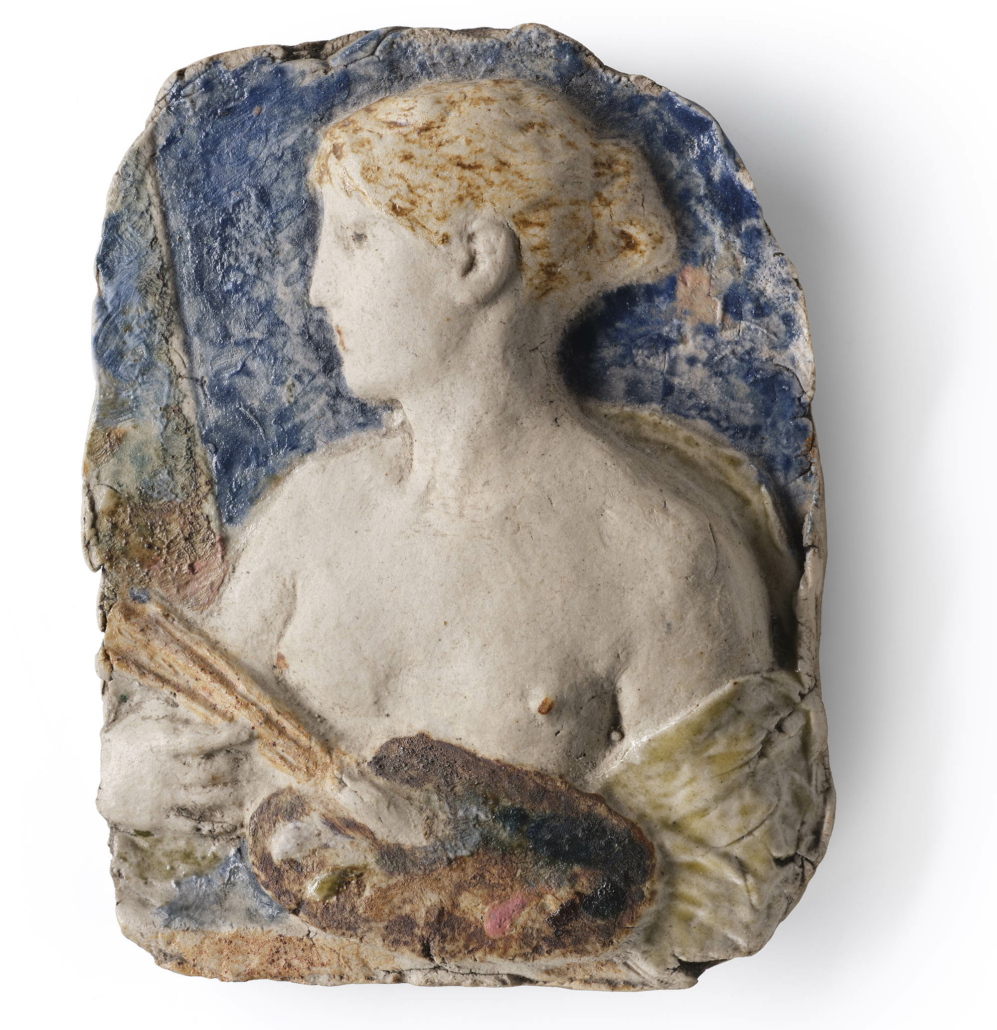
At the crossroads of his two technical periods, between waxes and glass pastes, Henry Cros creates a few polychrome terracotta busts with colored clays (engobes). He gives life and presence to these young figures, like the gypsy woman from the Pyrenees in the Cité de la Ceramique museum in Sèvres. An example far from his parallel research on the archetypal image of a feminine ideal.
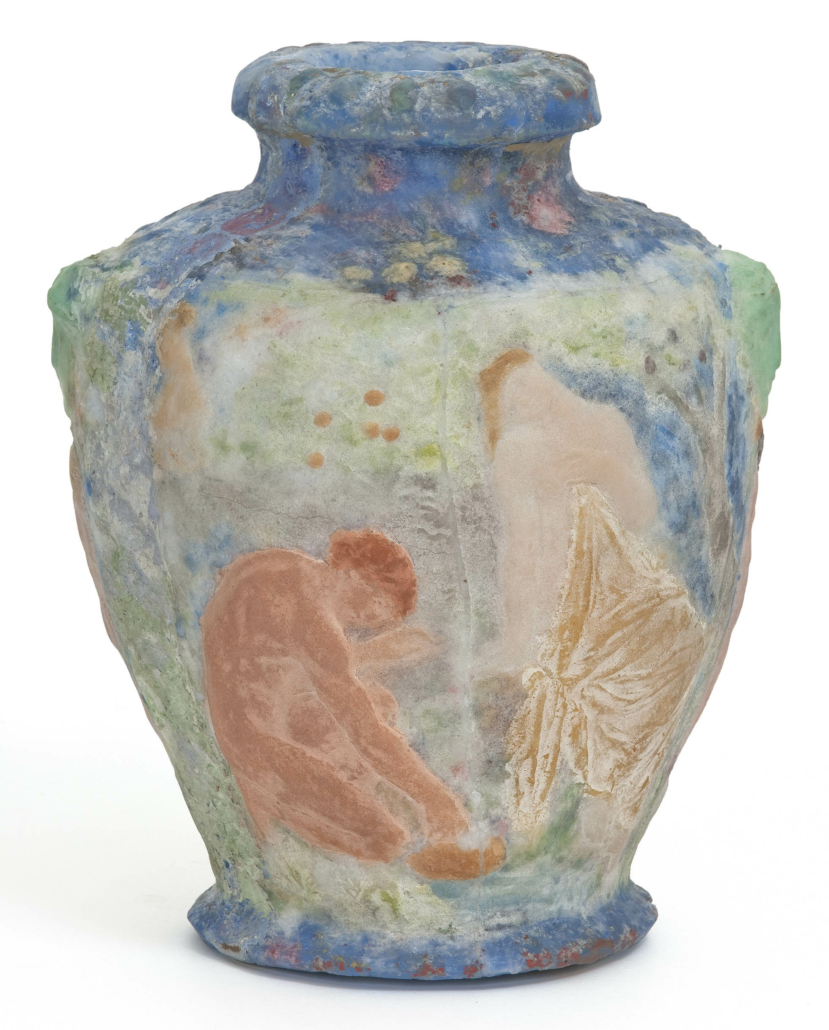
“Glass paste” is the name given by Henry Cros to a new technique of molding polychrome glass powders, which allows him to create colored sculptures and opens a new path in the creation of modern glass. He devoted the last twenty years of his life to this medium, and produced the most significant works of his artistic career. A large part of the exhibition is dedicated to him, with the remarkable watercolor projects, but also the masks, medallions and bas-reliefs, which retrace this period.
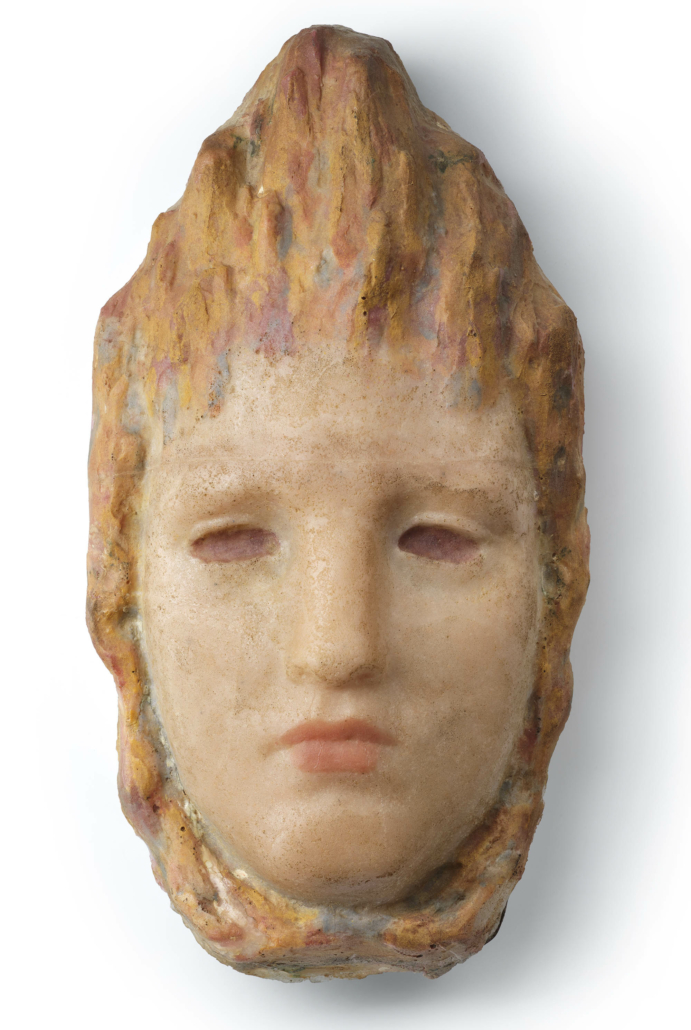
The exhibition highlights the two large watercolor projects and the version cast in bronze by Hébrard, as well as the rare glass vase produced by the hand of Henry Cros. Among the works in glass paste, the medallion portrait of young François Coppée, The Nymph Galatea, the mask La Flamme from the Universal Exhibition of 1900 or the cup Le Silence, illustrate the great richness and diversity of the themes addressed by the ‘artist.
This monograph demonstrates the mark left by this unique artist, celebrating a man whose daring creativity and innovative and poetic research have undoubtedly marked the history of 19th century art and particularly a certain history of modern glass.

